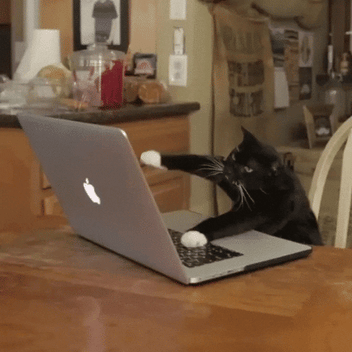What to Include in Your Trade Show Plan/Strategy
Trade shows are more than just networking events. When executed with precision and strategy, they serve as a multifaceted platform to elevate your brand, forge meaningful connections with industry influencers, and attract a pool of potential clients. They can be a catalyst for business growth and brand recognition. However, without a well-crafted, comprehensive strategy that aligns with your marketing goals, trade shows can quickly devolve into a chaotic, resource-draining missed opportunity.
Today, we're exploring actionable insights on how to create a trade show plan that goes beyond just eye-catching booths. We're talking about a holistic strategy that integrates solid marketing tactics, from pre-show planning to post-show follow-up.
Pre-Show Planning
Objectives and KPIs
Before you even book your booth space, it's important to establish what you want to achieve at the trade show. Are you looking to generate new leads, increase brand awareness, or launch a new product? Maybe it's a combination of these. Once you've identified your objectives, the next step is to set Key Performance Indicators (KPIs). These metrics will help you measure how well you've achieved your goals. For example, if lead generation is a primary objective, your KPIs might include the number of new contacts made or the quality of those contacts. If brand awareness is the goal, social media engagement and booth foot traffic might be your KPIs.
Budgeting
Let's talk money. Trade shows are a significant investment, and it's easy for costs to spiral out of control if you're not careful. Start by creating a detailed budget that covers everything from booth design and construction to travel and accommodation for your team. Don't forget promotional materials, technology rentals, and any show-specific fees. Once you've got a budget, stick to it. Use it as a guide to allocate resources wisely. If you're a startup, maybe you don't need the biggest booth; a smaller, well-designed space could be just as effective.
Team Training
Your team is your front line, and they need to be prepared. They should be experts on your products or services. They should also be good at engaging potential clients and capturing leads. Consider conducting role-playing exercises to simulate different customer interactions. Train them on how to use any lead capture technology you'll be using, like tablets or specific apps. Make sure they know how to articulate your value proposition quickly and effectively. A well-prepared team can make the difference between a mediocre trade show experience and a highly successful one.
During the Show
Booth Design
Your booth is essentially your brand's physical storefront for the duration of the trade show, so you need to make it count. The design should be eye-catching but also functional. Think interactive displays that allow visitors to engage with your product or service. Use engaging visuals like high-quality banners and digital screens to tell your brand's story. Consider adding elements like touchscreens for product demos or even a small lounge area where visitors can relax and chat with your team. The goal is to create an environment where potential clients want to linger, giving you more time to engage and make a lasting impression.
Networking
While your booth is your home base, don't get stuck there. Trade shows are networking goldmines. Step out and explore. Attend industry seminars, panel discussions, and workshops. These events are educational and also excellent venues for meeting people who could be future partners or clients. Carry a stack of business cards and don't hesitate to introduce yourself. You never know, the person sitting next to you during a seminar could be your next big client. Remember, opportunities are everywhere; you just have to be proactive in seeking them out.
Data Collection
Collecting visitor information is crucial for effective follow-ups. Use QR codes or lead capture apps to make this process seamless. These tools allow you to quickly gather contact details, which can then be used for targeted post-show marketing campaigns.
Another often overlooked resource is the attendance list provided by the trade show organizers. Many trade shows offer a list of attendees both before and after the event, although this may come at an extra cost. You'll need to request this list specifically from the organizers. Having access to this list can be a real bonus for your marketing efforts. It allows you to engage in pre-show marketing to build anticipation and post-show marketing to continue the conversation. The list can be a goldmine for targeted, personalized marketing campaigns that extend the life and reach of your trade show investment.
Post-Show Follow-Up
Lead Nurturing
The trade show may have ended, but in many ways, the real work is just beginning. You've collected a treasure trove of leads, and now it's time to nurture them. Start by segmenting your leads into different categories, such as hot leads, warm leads, and cold leads. This will help you tailor your follow-up strategies. For hot leads, you might want to schedule a one-on-one meeting or a product demo. For warm and cold leads, a series of personalized emails might be more appropriate. The key is personalization because generic follow-ups are easy to ignore. Use the data you've collected to speak directly to each lead's pain points or interests. A well-executed nurturing campaign can turn leads into loyal customers.
Analytics
Once the dust has settled, it's time for some introspection. Go back to those KPIs you set during the pre-show planning phase. How did you do? Did you meet your objectives for lead generation, brand awareness, or whatever else you aimed to achieve? Analyze all the data you've collected, not just from lead capture but also from social media engagement, booth foot traffic, and any other metrics you were tracking. Identify what worked and what didn't. This post-show analysis is invaluable for understanding your ROI and for planning future trade shows.
Marketing Tactics to Incorporate
Social Media
Your trade show presence isn't limited to the physical booth; it extends to the virtual world as well. Platforms like LinkedIn and Twitter are invaluable for building hype. Before the event, share posts about what attendees can expect at your booth, perhaps teasing a new product launch or exclusive offers. During the event, keep your audience updated with live posts, photos, and even short video clips. Engage with attendees by using event-specific hashtags. After the event, share your key takeaways and thank everyone who visited your booth. Social media amplifies your reach, allowing you to engage with people who couldn't attend the show and reinforcing connections with those who did.
Email Marketing
Email remains one of the most effective channels for direct communication with your audience. Start by sending out personalized emails to your segmented list of leads. These could be pre-show teasers, mid-show updates, or post-show follow-ups. The key is to make each email relevant to its recipient. Use the data you've collected to tailor your message, whether it's acknowledging a conversation you had at the booth or providing additional information on a product the lead showed interest in.
Content Marketing
After the event, leverage content marketing to keep the momentum going. Write blogs that summarize the key takeaways, trends, and insights gained from the trade show. If blogs aren't your thing, create video content. Videos can be more engaging and shareable, offering another avenue to keep the conversation going long after the event has ended.
By incorporating these marketing tactics—Social Media, Email Marketing, and Content Marketing—into your trade show strategy, you're maximizing your reach and also creating multiple touchpoints for engagement, both during and after the event.
Common Pitfalls to Avoid
Poor Follow-Up
The most glaring mistake many companies make post-trade shows is poor follow-up. You've invested time, money, and resources to generate leads, but if you don't follow up effectively, it's all for nothing. A generic "Thank you for visiting our booth" email won't cut it. Your follow-up needs to be timely, personalized, and aligned with the lead's interest or pain points. Failing to do this can result in lost opportunities and a poor ROI.
Undefined Goals
Another pitfall is heading into a trade show without clear objectives. Whether it's lead generation, brand awareness, or customer engagement, you need to know what you intend to achieve. Without well-defined goals and KPIs, you're essentially sailing without a compass, making it difficult to measure success or learn from the experience.
Ignoring Social Media
If you're not using social media, you're missing out. Sure, on the surface it seems like a platform for selfies and memes. But it's also a powerful marketing tool. Social media allows you to extend your trade show presence beyond the physical venue, engaging with attendees and those who couldn't make it. It's also a great way to monitor real-time feedback and sentiment about your brand.
By being aware of these common pitfalls you can take proactive steps to avoid them, setting the stage for a more successful and impactful trade show experience.
Elevate Your Trade Show Game: The Takeaway
Trade shows are a golden opportunity to elevate your brand, forge meaningful connections, and drive business growth. By meticulously planning your pre-show, in-show, and post-show strategies, you're not just aiming for a successful event—you're setting the stage for long-term gains. It's about creating a holistic experience that resonates with your audience and delivers tangible results.
Ready to take your trade show marketing to the next level? Don't miss out on more expert tips and strategies. Download ThrivePOP's latest resource, "12 Subject Lines for Trade Show Marketing," and start crafting compelling campaigns today.



.png?height=500&name=Blog%20Featured%20Images%20New%20Website%20(6).png)

